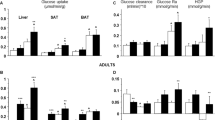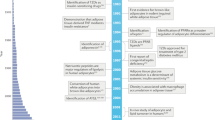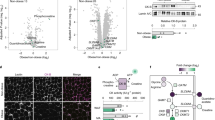Abstract
Type 2 diabetes (T2D) is characterized by a general dysregulation of postprandial energy substrate partitioning. Although classically described in regard to glucose metabolism, it is now evident that metabolic inflexibility of plasma lipid fluxes is also present in T2D. The organ that is most importantly involved in the latter metabolic defect is the white adipose tissue (WAT). Both catecholamine-induced nonesterified fatty acid mobilization and insulin-stimulated storage of meal fatty acids are impaired in many WAT depots of insulin-resistant individuals. Novel molecular imaging techniques now demonstrate that these defects are linked to increased dietary fatty acid fluxes toward lean organs and myocardial dysfunction in humans. Recent findings also demonstrate functional abnormalities of brown adipose tissues in T2D, thus suggesting that a generalized adipose tissue dysregulation of energy storage and dissipation may be at play in the development of lean tissue energy overload and lipotoxicity.
This is a preview of subscription content, access via your institution
Access options
Subscribe to this journal
We are sorry, but there is no personal subscription option available for your country.
Buy this article
- Purchase on Springer Link
- Instant access to full article PDF
Prices may be subject to local taxes which are calculated during checkout

Similar content being viewed by others
References
Corpeleijn E, Saris WH, Blaak EE . Metabolic flexibility in the development of insulin resistance and type 2 diabetes: effects of lifestyle. Obes Rev 2009; 10: 178–193.
Nielsen S, Guo Z, Johnson CM, Hensrud DD, Jensen MD . Splanchnic lipolysis in human obesity. J Clin Invest 2004; 113: 1582–1588.
Goldberg IJ, Merkel M . Lipoprotein lipase: physiology, biochemistry, and molecular biology. Front Biosci 2001; 6: D388–D405.
Goldberg IJ, Eckel RH, Abumrad NA . Regulation of fatty acid uptake into tissues: lipoprotein lipase- and CD36-mediated pathways. J Lipid Res 2009; 50 (Suppl): S86–S90.
Farese Jr RV, Yost TJ, Eckel RH . Tissue-specific regulation of lipoprotein lipase activity by insulin/glucose in normal-weight humans. Metabolism 1991; 40: 214–216.
Coppack SW, Yost TJ, Fisher RM, Eckel RH, Miles JM . Periprandial systemic and regional lipase activity in normal humans. Am J Physiol 1996; 270 (Part 1): E718–E722.
McQuaid SE, Hodson L, Neville MJ, Dennis AL, Cheeseman J, Humphreys SM et al. Downregulation of adipose tissue fatty acid trafficking in obesity: a driver for ectopic fat deposition? Diabetes 2011; 60: 47–55.
Unger RH, Zhou YT . Lipotoxicity of beta-cells in obesity and in other causes of fatty acid spillover. Diabetes 2001; 50 (Suppl 1): S118–S121.
Lewis GF, Carpentier A, Adeli K, Giacca A . Disordered fat storage and mobilization in the pathogenesis of insulin resistance and type 2 diabetes. Endocr Rev 2002; 23: 201–229.
Miles JM, Nelson RH . Contribution of triglyceride-rich lipoproteins to plasma free fatty acids. Horm Metab Res 2007; 39: 726–729.
Carpentier AC . Postprandial fatty acid metabolism in the development of lipotoxicity and type 2 diabetes. Diabetes Metab 2008; 34: 97–107.
Carpentier AC, Labbe SM, Grenier-Larouche T, Noll C . Abnormal dietary fatty acid metabolic partitioning in insulin resistance and type 2 diabetes. Clin Lipidol 2011; 6: 703–716.
Fielding B . Tracing the fate of dietary fatty acids: metabolic studies of postprandial lipaemia in human subjects. Proc Nutr Soc 2011; 70: 342–350.
Nedergaard J, Bengtsson T, Cannon B . Unexpected evidence for active brown adipose tissue in adult humans. Am J Physiol Endocrinol Metab 2007; 293: E444–E452.
Cypess AM, Lehman S, Williams G, Tal I, Rodman D, Goldfine AB et al. Identification and importance of brown adipose tissue in adult humans. N Engl J Med 2009; 360: 1509–1517.
Ouellet V, Routhier-Labadie A, Bellemare W, Lakhal-Chaieb L, Turcotte E, Carpentier AC et al. Outdoor temperature, age, sex, body mass index, and diabetic status determine the prevalence, mass, and glucose-uptake activity of 18F-FDG-detected BAT in humans. J Clin Endocrinol Metab 2011; 96: 192–199.
Bickerton AS, Roberts R, Fielding BA, Hodson L, Blaak EE, Wagenmakers AJ et al. Preferential uptake of dietary Fatty acids in adipose tissue and muscle in the postprandial period. Diabetes 2007; 56: 168–176.
McQuaid SE, Humphreys SM, Hodson L, Fielding BA, Karpe F, Frayn KN . Femoral adipose tissue may accumulate the fat that has been recycled as VLDL and nonesterified fatty acids. Diabetes 2010; 59: 2465–2473.
Marin P, Rebuffe-Scrive M, Bjorntorp P . Uptake of triglyceride fatty acids in adipose tissue in vivo in man. Eur J Clin Invest 1990; 20: 158–165.
Ruge T, Hodson L, Cheeseman J, Dennis AL, Fielding BA, Humphreys SM et al. Fasted to fed trafficking of Fatty acids in human adipose tissue reveals a novel regulatory step for enhanced fat storage. J Clin Endocrinol Metab 2009; 94: 1781–1788.
Carpentier A, Frisch F, Cyr D, Genereux P, Patterson BW, Giguere R et al. On the suppression of plasma non-esterified fatty acids by insulin during enhanced intravascular lipolysis in humans. Am J Physiol Endocrinol Metab 2005; 289: E849–E856.
Brassard P, Frisch F, Lavoie F, Cyr D, Bourbonnais A, Cunnane SC et al. Impaired plasma nonesterified fatty acid tolerance is an early defect in the natural history of type 2 diabetes. J Clin Endocrinol Metab 2008; 93: 837–844.
Jensen MD, Sarr MG, Dumesic DA, Southorn PA, Levine JA . Regional uptake of meal fatty acids in humans. Am J Physiol Endocrinol Metab 2003; 285: E1282–E1288.
Mitrou P, Boutati E, Lambadiari V, Maratou E, Komesidou V, Papakonstantinou A et al. Rates of lipid fluxes in adipose tissue in vivo after a mixed meal in morbid obesity. Int J Obes (Lond) 2010; 34: 770–774.
Bickerton AS, Roberts R, Fielding BA, Tornqvist H, Blaak EE, Wagenmakers AJ et al. Adipose tissue fatty acid metabolism in insulin-resistant men. Diabetologia 2008; 51: 1466–1474.
Normand-Lauziere F, Frisch F, Labbe SM, Bherer P, Gagnon R, Cunnane SC et al. Increased postprandial nonesterified fatty acid appearance and oxidation in type 2 diabetes is not fully established in offspring of diabetic subjects. PLoS One 2010; 5: e10956.
Woerle HJ, Szoke E, Meyer C, Dostou JM, Wittlin SD, Gosmanov NR et al. Mechanisms for abnormal postprandial glucose metabolism in type 2 diabetes. Am J Physiol Endocrinol Metab 2006; 290: E67–E77.
Qvisth V, Hagstrom-Toft E, Moberg E, Sjoberg S, Bolinder J . Lactate release from adipose tissue and skeletal muscle in vivo: defective insulin regulation in insulin-resistant obese women. Am J Physiol Endocrinol Metab 2007; 292: E709–E714.
Sandqvist MM, Eriksson JW, Jansson PA . Increased lactate release per fat cell in normoglycemic first-degree relatives of individuals with type 2 diabetes. Diabetes 2001; 50: 2344–2348.
Perez de HF, Wood IS, Trayhurn P . Hypoxia stimulates lactate release and modulates monocarboxylate transporter (MCT1, MCT2, and MCT4) expression in human adipocytes. Pflugers Arch 2010; 459: 509–518.
Wood IS, Stezhka T, Trayhurn P . Modulation of adipokine production, glucose uptake and lactate release in human adipocytes by small changes in oxygen tension. Pflugers Arch 2011; 462: 469–477.
Sun K, Kusminski CM, Scherer PE . Adipose tissue remodeling and obesity. J Clin Invest 2011; 121: 2094–2101.
Labbe SM, Croteau E, Grenier-Larouche T, Frisch F, Ouellet R, Langlois R et al. Normal postprandial nonesterified Fatty Acid uptake in muscles despite increased circulating Fatty acids in type 2 diabetes. Diabetes 2011; 60: 408–415.
Ravikumar B, Carey PE, Snaar JE, Deelchand DK, Cook DB, Neely RD et al. Real-time assessment of postprandial fat storage in liver and skeletal muscle in health and type 2 diabetes. Am J Physiol Endocrinol Metab 2005; 288: E789–E797.
Labbe SM, Grenier-Larouche T, Croteau E, Normand-Lauziere F, Frisch F, Ouellet R et al. Organ-specific dietary fatty acid uptake in humans using positron emission tomography coupled to computed tomography. Am J Physiol Endocrinol Metab 2011; 300: E445–E453.
Ci X, Frisch F, Lavoie F, Germain P, Lecomte R, van Lier JE et al. The effect of insulin on the intracellular distribution of 14(R,S)-[(18)F]fluoro-6-thia-heptadecanoic acid in rats. Mol Imaging Biol 2006; 8: 237–244.
Labbé SM, Grenier-Larouche T, Noll C, Phoenix S, Guérin B, Turcotte EE et al. Increased myocardial uptake of dietary fatty acids linked to cardiac dysfunction in glucose intolerant humans. Diabetes 2012 (in press).
Lowell BB, Shulman GI . Mitochondrial dysfunction and type 2 diabetes. Science 2005; 307: 384–387.
Holloszy JO . Skeletal muscle ″mitochondrial deficiency″ does not mediate insulin resistance. Am J Clin Nutr 2009; 89: 463S–466S.
Muoio DM . Intramuscular triacylglycerol and insulin resistance: guilty as charged or wrongly accused? Biochim Biophys Acta 2010; 1801: 281–288.
Menard SL, Croteau E, Sarrhini O, Gelinas R, Brassard P, Ouellet R et al. Abnormal in vivo myocardial energy substrate uptake in diet-induced type 2 diabetic cardiomyopathy in rats. Am J Physiol Endocrinol Metab 2010; 298: E1049–E1057.
Jocken JW, Blaak EE . Catecholamine-induced lipolysis in adipose tissue and skeletal muscle in obesity. Physiol Behav 2008; 94: 219–230.
Karpe F, Dickmann JR, Frayn KN . Fatty acids, obesity, and insulin resistance: time for a reevaluation. Diabetes 2011; 60: 2441–2449.
Horowitz JF, Coppack SW, Paramore D, Cryer PE, Zhao GH, Klein S . Effect of short-term fasting on lipid kinetics in lean and obese women. Am J Physiol Endocrinol Metab 1999; 39: E278–E284.
Jocken JW, Langin D, Smit E, Saris WH, Valle C, Hul GB et al. Adipose triglyceride lipase and hormone-sensitive lipase protein expression is decreased in the obese insulin-resistant state. J Clin Endocrinol Metab 2007; 92: 2292–2299.
Reynisdottir S, Ellerfeldt K, Wahrenberg H, Lithell H, Arner P . Multiple lipolysis defects in the insulin resistance (metabolic) syndrome. J Clin Invest 1994; 93: 2590–2599.
Arner P, Bernard S, Salehpour M, Possnert G, Liebl J, Steier P et al. Dynamics of human adipose lipid turnover in health and metabolic disease. Nature 2011; 478: 110–113.
Arner P, Arner E, Hammarstedt A, Smith U . Genetic predisposition for type 2 diabetes, but not for overweight/obesity, is associated with a restricted adipogenesis. PLoS One 2011; 6: e18284.
Laurencikiene J, Skurk T, Kulyte A, Heden P, Astrom G, Sjolin E et al. Regulation of lipolysis in small and large fat cells of the same subject. J Clin Endocrinol Metab 2011; 96: E2045–E2049.
Belgardt BF, Bruning JC . CNS leptin and insulin action in the control of energy homeostasis. Ann N Y Acad Sci 2010; 1212: 97–113.
Scherer T, Buettner C . Yin and Yang of hypothalamic insulin and leptin signaling in regulating white adipose tissue metabolism. Rev Endocr Metab Disord 2011; 12: 235–243.
Scherer T, O’Hare J, Diggs-Andrews K, Schweiger M, Cheng B, Lindtner C et al. Brain insulin controls adipose tissue lipolysis and lipogenesis. Cell Metab 2011; 13: 183–194.
Richard D, Picard F . Brown fat biology and thermogenesis. Front Biosci 2011; 16: 1233–1260.
Granneman JG, Li P, Zhu Z, Lu Y . Metabolic and cellular plasticity in white adipose tissue I: effects of beta3-adrenergic receptor activation. Am J Physiol Endocrinol Metab 2005; 289: E608–E616.
Collins S, Yehuda-Shnaidman E, Wang H . Positive and negative control of Ucp1 gene transcription and the role of beta-adrenergic signaling networks. Int J Obes (Lond) 2010; 34 (Suppl 1): S28–S33.
Vegiopoulos A, Muller-Decker K, Strzoda D, Schmitt I, Chichelnitskiy E, Ostertag A et al. Cyclooxygenase-2 controls energy homeostasis in mice by de novo recruitment of brown adipocytes. Science 2010; 328: 1158–1161.
Madsen L, Pedersen LM, Lillefosse HH, Fjaere E, Bronstad I, Hao Q et al. UCP1 induction during recruitment of brown adipocytes in white adipose tissue is dependent on cyclooxygenase activity. PLoS One 2010; 5: e11391.
Mottillo EP, Granneman JG . Intracellular fatty acids suppress beta-adrenergic induction of PKA-targeted gene expression in white adipocytes. Am J Physiol Endocrinol Metab 2011; 301: E122–E131.
Tseng YH, Butte AJ, Kokkotou E, Yechoor VK, Taniguchi CM, Kriauciunas KM et al. Prediction of preadipocyte differentiation by gene expression reveals role of insulin receptor substrates and necdin. Nat Cell Biol 2005; 7: 601–611.
Cypess AM, Zhang H, Schulz TJ, Huang TL, Espinoza DO, Kristiansen K et al. Insulin/IGF-I regulation of necdin and brown adipocyte differentiation via. Endocrinology 2011; 152: 3680–3689.
van Tienen FH, Van Der Kallen CJ, Lindsey PJ, Wanders RJ, van Greevenbroek MM, Smeets HJ . Preadipocytes of type 2 diabetes subjects display an intrinsic gene expression profile of decreased differentiation capacity. Int J Obes (Lond) 2011; 35: 1154–1164.
Zingaretti MC, Crosta F, Vitali A, Guerrieri M, Frontini A, Cannon B et al. The presence of UCP1 demonstrates that metabolically active adipose tissue in the neck of adult humans truly represents brown adipose tissue. FASEB J 2009; 23: 3113–3120.
Bachman ES, Dhillon H, Zhang CY, Cinti S, Bianco AC, Kobilka BK et al. betaAR signaling required for diet-induced thermogenesis and obesity resistance. Science 2002; 297: 843–845.
Helies JM, Diane A, Langlois A, Larue-Achagiotis C, Fromentin G, Tome D et al. Comparison of fat storage between Fischer 344 and obesity-resistant Lou/C rats fed different diets. Obes Res 2005; 13: 3–10.
Veyrat-Durebex C, Poher AL, Caillon A, Montet X, Rohner-Jeanrenaud F . Alterations in lipid metabolism and thermogenesis with emergence of brown adipocytes in white adipose tissue in diet-induced obesity-resistant Lou/C rats. Am J Physiol Endocrinol Metab 2011; 300: E1146–E1157.
Enriori PJ, Sinnayah P, Simonds SE, Garcia RC, Cowley MA . Leptin action in the dorsomedial hypothalamus increases sympathetic tone to brown adipose tissue in spite of systemic leptin resistance. J Neurosci 2011; 31: 12189–12197.
Lowell BB, Spiegelman BM . Towards a molecular understanding of adaptive thermogenesis. Nature 2000; 404: 652–660.
Ghorbani M, Himms-Hagen J . Appearance of brown adipocytes in white adipose tissue during CL 316,243-induced reversal of obesity and diabetes in Zucker fa/fa rats. Int J Obes Relat Metab Disord 1997; 21: 465–475.
Arch JR . The discovery of drugs for obesity, the metabolic effects of leptin and variable receptor pharmacology: perspectives from beta3-adrenoceptor agonists. Naunyn Schmiedebergs Arch Pharmacol 2008; 378: 225–240.
Elabd C, Chiellini C, Carmona M, Galitzky J, Cochet O, Petersen R et al. Human multipotent adipose-derived stem cells differentiate into functional brown adipocytes. Stem Cells 2009; 27: 2753–2760.
Saito M, Okamatsu-Ogura Y, Matsushita M, Watanabe K, Yoneshiro T, Nio-Kobayashi J et al. High incidence of metabolically active brown adipose tissue in healthy adult humans: effects of cold exposure and adiposity. Diabetes 2009; 58: 1526–1531.
van Marken Lichtenbelt WD, Vanhommerig JW, Smulders NM, Drossaerts JM, Kemerink GJ, Bouvy ND et al. Cold-activated brown adipose tissue in healthy men. N Engl J Med 2009; 360: 1500–1508.
van Marken Lichtenbelt WD, Schrauwen P . Implications of nonshivering thermogenesis for energy balance regulation in humans. Am J Physiol Regul Integr Comp Physiol 2011; 301: R285–R296.
Ouellet V, Labbé SM, Blondin DP, Phoenix S, Guérin B, Haman F et al. Brown adipose tissue oxidative metabolism contributes to energy expenditure during acute cold exposure in humans. J Clin Invest 2012; 122: 545–552.
Vijgen GH, Bouvy ND, Teule GJ, Brans B, Schrauwen P, van Marken Lichtenbelt WD . Brown adipose tissue in morbidly obese subjects. PLoS One 2011; 6: e17247.
Acknowledgements
SML is the recipient of a Canadian Diabetes Association doctoral studentship. ACC is the recipient of the CIHR-GSK Chair in Diabetes.
Author information
Authors and Affiliations
Corresponding author
Ethics declarations
Competing interests
The authors declare no conflict of interest.
Additional information
This article was published as part of a supplement funded with an unrestricted educational contribution from Desjardins Sécurité Financière.
Rights and permissions
About this article
Cite this article
Grenier-Larouche, T., Labbé, S., Noll, C. et al. Metabolic inflexibility of white and brown adipose tissues in abnormal fatty acid partitioning of type 2 diabetes. Int J Obes Supp 2 (Suppl 2), S37–S42 (2012). https://doi.org/10.1038/ijosup.2012.21
Published:
Issue Date:
DOI: https://doi.org/10.1038/ijosup.2012.21



